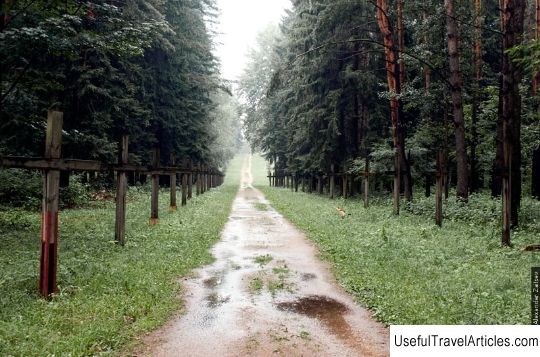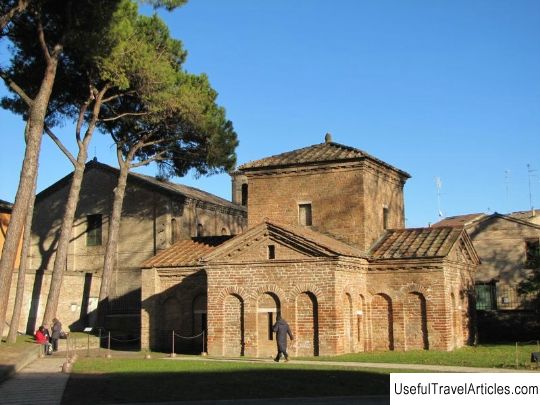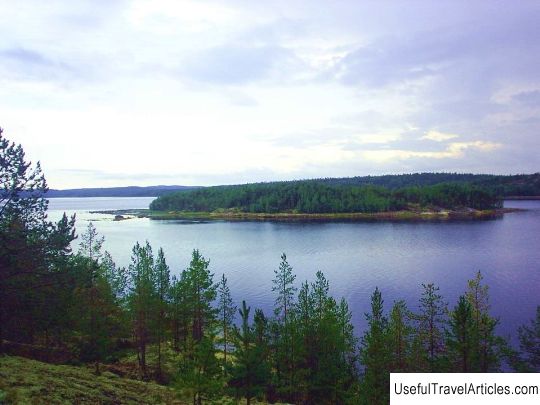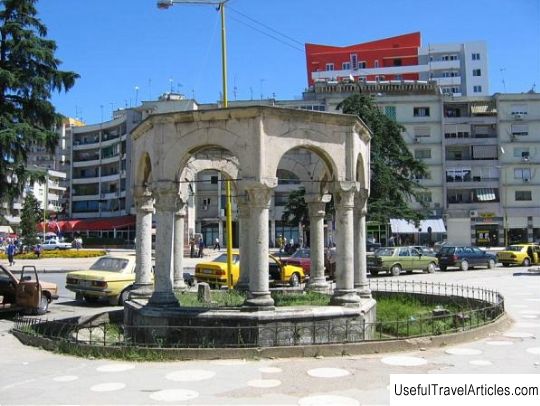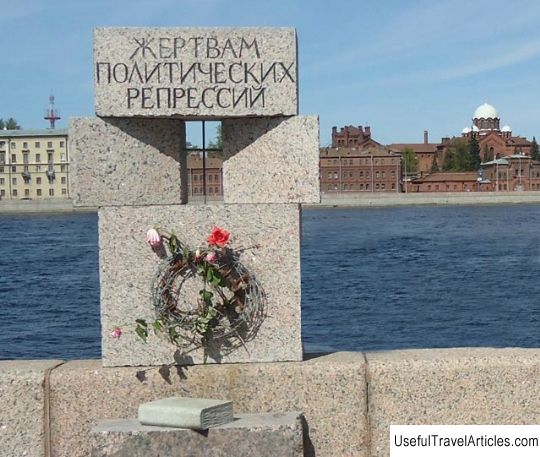Sandarmokh description and photo - Russia - Karelia: Medvezhyegorsky district
Rating: 7,9/10 (2133 votes) 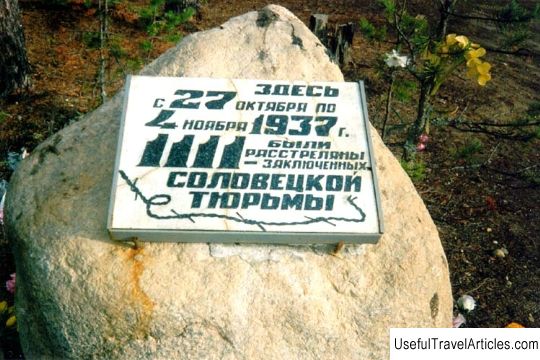
Sandarmokh description and photo - Russia - Karelia: Medvezhyegorsky District. Detailed information about the attraction. Description, photos and a map showing the nearest significant objects. Photo and descriptionSandarmokh is a forest tract located in the Karelian Medvezhyegorsk region, 19 km from the famous village of Povenets. It was in this place on the territory of 10 hectares that more than 9500 people belonging to 58 nationalities were shot and buried in 1937-1938. This place is considered one of the most impressive and largest places in the northwestern part of Russia for the burial of victims during the Stalinist repressions of the indicated years. The Memorial Society the secret burial of numerous victims of political mass repressions in July 1997 was discovered. The expedition was headed by Yuri Dmitriev. 236 execution pits with burials were found in these places. There are archival data that indicate that from August 11, 1937 to December 24, 1938, people of Russian, Finnish, Belarusian, Jewish, Karelian, Ukrainian, Tatar, Gypsy, German nationalities and others were shot and buried at this place. 4514 residents of Karelia were identified by surnames; this number included prisoners and special settlers of the Belbaltkombinat, who were documented by some surviving acts of execution, in which the places of their death were indicated. The names of at least 900 more people were found out, mostly residents of nearby villages, but the exact places of execution and burial of these people have not been found, since this information was not indicated in the documents. A list was found 1111 prisoners, mentioned by surname, who were serving their sentences in the Solovetsky special camp. The prisoners were executed here from October 27 to November 4, 1937. What is especially important is that the largest amount of information from archival materials was found about this group of people. At that time, it was believed that the prisoners of the Solovetsky camp belonged to the group of the anti-Soviet segment. In order to clear the ranks of dissidents, a `` troika '' was created Special purpose of the NKVD Directorate of the Leningrad Region. This department consisted of: Leonid Zakovsky - head of one of the NKVD departments, Vladimir Garin - deputy head of the NKVD department and prosecutor Boris Posern. The largest number of shots was fired by Mikhail Matveyev, who was at that time in the position of deputy head of the NKVD administration. Today Sandarmokh is a memorial forest cemetery. The execution pits are marked with columns, which, after the funeral service, became the mass graves of a huge number of innocent people. Soon an asphalt road was built here and a wooden chapel of St. George the Victorious was built. On the Field of Remembrance there are Polish Catholic and Russian Orthodox crosses. In the forest there is a stone of memory with an inscription about the execution of the executed prisoners of a special prison. On August 22, 1998, the international action "Repentance" was held. Right at the entrance to the cemetery, a granite monument was erected by the sculptor from Karelia Grigory Saltup. The massive block contains the inscription: "People, do not kill each other." In early August 2005, the opening of the Cossack granite cross took place, the height of which was 4 meters, and the weight of about 8 tons. The monument is dedicated to the executed residents of Ukraine and was made by Ukrainian sculptors Nazar Bilyk and Nikolai Malyshko. The cross was consecrated in October 2004, despite the fact that the opening took place a little later.       We also recommend reading House of Likhachevs description and photo - Russia - Volga region: Kazan Topic: Sandarmokh description and photo - Russia - Karelia: Medvezhyegorsky district. |
